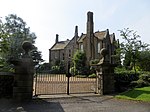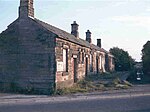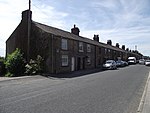Lancashire ( LAN-kə-shər, -sheer; abbreviated Lancs) is a ceremonial county in North West England. It is bordered by Cumbria to the north, North Yorkshire and West Yorkshire to the east, Greater Manchester and Merseyside to the south, and the Irish Sea to the west. The largest settlement is Blackpool, and the county town is the city of Preston.The county has an area of 3,079 square kilometres (1,189 sq mi) and a population of 1,490,300. After Blackpool (149,070), the largest settlements are Blackburn (124,995) and the city of Preston (94,490); the city of Lancaster has a population of 52,655. For local government purposes, Lancashire comprises a non-metropolitan county, with twelve districts, and two unitary authority areas, Blackburn with Darwen and Blackpool. The county historically included northern Greater Manchester and Merseyside, the Furness and Cartmel peninsulas of Cumbria, and some of northern Cheshire, and excluded the eastern part of the Forest of Bowland.
The west of Lancashire contains flat coastal plains, which rise to the hills of the Pennines in the east. The county contains large parts of two national landscapes, Arnside and Silverdale and the Forest of Bowland, and other protected areas such as the Ribble and Alt Estuaries National nature reserve. The major rivers in the county are, from north to south, the Lune, the Wyre, and the Ribble, which all flow west into the Irish Sea. The highest point in Lancashire is either Gragareth or Green Hill, both approximately 628 m (2,060 ft) high and located in the far north-east of the county.
Lancashire was founded in the 12th century; in the Domesday Book of 1086 much of what would become the county is treated as part of Yorkshire and Cheshire. Until the Early Modern period the county was a comparatively poor backwater, although in 1351 it became a palatine, with a semi-independent judicial system. This changed during the Industrial Revolution, when the county rapidly industrialised; until 1974 it included both Liverpool, a major port, and Manchester, which with its surrounding towns dominated the manufacture of textiles. The Lancashire coalfield was also exploited, with many collieries opening. By 1971 Lancashire had a population of 5,118,405, which made it the most heavily populated county in the United Kingdom after Greater London.











